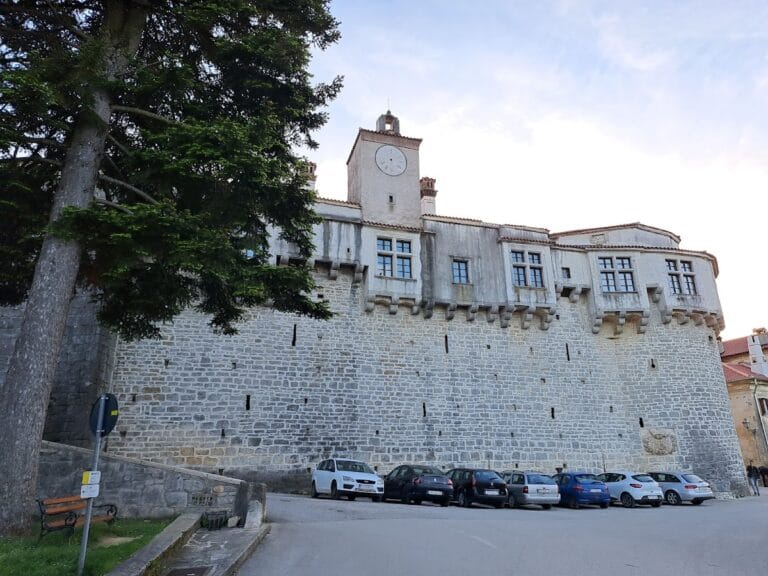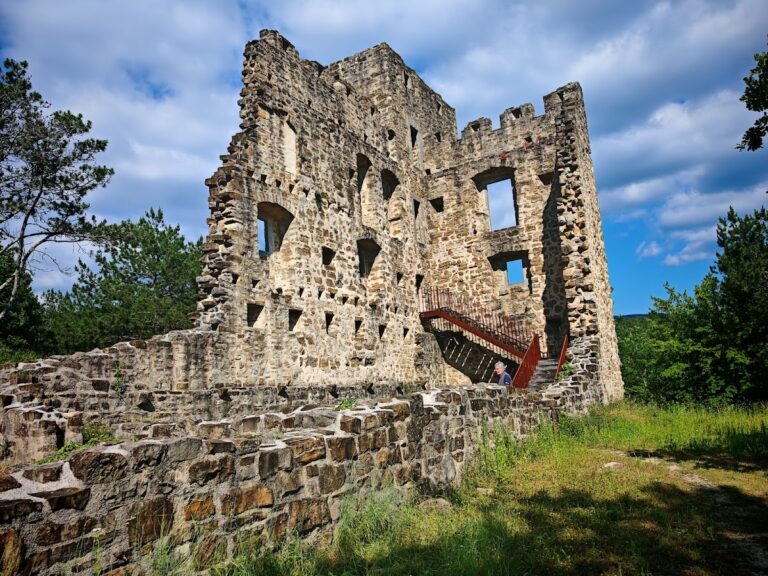Castle Završje: A Medieval Fortress in Croatia
Visitor Information
Google Rating: 4.6
Popularity: Low
Google Maps: View on Google Maps
Official Website: www.tz-groznjan.hr
Country: Croatia
Civilization: Medieval European
Remains: Military
History
Castle Završje is a medieval fortress located in the municipality of Završje, Croatia. It was constructed during the medieval period by the noble Contarini family, who served under Ulrik I, the margrave responsible for managing the Istrian borderlands. The site was once known by several names, including Castrum Piemonte, Castrum Pyamont, Poymont, and Pemund, reflecting its evolving identity through history.
The earliest known documentary mention of the settlement dates from 1102, when Ulrik II, then margrave of the Istrian march, made a donation concerning the area to the Patriarchate of Aquileia. Over the following centuries, the castle and its surrounding lands underwent multiple transfers of ownership. By 1276, the influential Rihemberk family had taken control, followed by the counts of Pazin and Gorizia around the turn of the 14th century. During this time, the fortress held strategic importance, facing military challenges such as the attack repelled in 1360 under Venetian authority. The Venetian Republic formally incorporated the area in 1511.
After 1374, governance of the castle shifted to the Pazin county under the Habsburgs, who appointed a captain to oversee the fief. Ownership returned to the Contarini family in 1532, marking a period of stability that lasted nearly three hundred years. The estate experienced changes during the 19th century, first coming briefly under Napoleonic control, and thereafter returning to Austrian rule. The Austrians contributed to the local development, including establishing a narrow-gauge railway known as the Parenzana.
During the 20th century, Završje expanded its infrastructure with postal services, education facilities, shops, an oil mill, and workshops for various crafts. The turmoil of World War II saw local Croatian and Italian anti-fascists unite in resistance against German occupation forces. After the war, treaties placed Završje within Yugoslavia’s borders, prompting significant emigration as the local population diminished from roughly ninety families to around forty residents.
Ethnically, the area reflected a complex blend of groups over time, including Romance-speaking Italians and Slavic populations composed of Croatians and Slovenians. Historical records reveal Slavic settlement from the late 14th century onward, though Italian cultural influence remained strong, especially before World War II. Documents from the early 17th century indicate that Italian legal and administrative language was commonly used by peasants, illustrating the layered identity of the community.
Remains
Castle Završje occupied a commanding position atop a hill reaching approximately 240 meters in elevation, situated between the towns of Grožnjan and Oprtalj near the current Croatia-Slovenia border. It was part of a fortified settlement characterized by double defensive walls protecting both the castle and the surrounding village, emphasizing its protective function in the medieval landscape.
Within the site lies a medieval church dedicated to the Blessed Virgin Mary. Constructed in the 16th century, the church features a bell tower in the Romanesque style, distinguished by rounded arches and sturdy stonework typical of the period. Though the castle itself lacks detailed descriptions regarding layout or building materials, this church stands as a key surviving structure linked to the fortress. In 1879, the church underwent its last recorded renovation.
Historically, the church housed valuable liturgical objects, including silver lamps and candlesticks from the 18th century, along with an elaborately decorated chalice bearing medallions dated 1476. This chalice was sold in the late 1700s and has since been preserved in the Louvre Museum. While specific architectural elements or construction techniques of the castle remain undocumented, the site is represented in historical maps and photographs, often captioned with the name “Piemonte d’Istria”.
No archaeological discoveries such as tools, pottery, or altars have been reported, and the current condition of the castle ruins is not clearly noted. Nevertheless, the combination of the robust defensive walls and the enduring presence of the religious building conveys the castle’s dual role as a military and spiritual center within its historical community.







